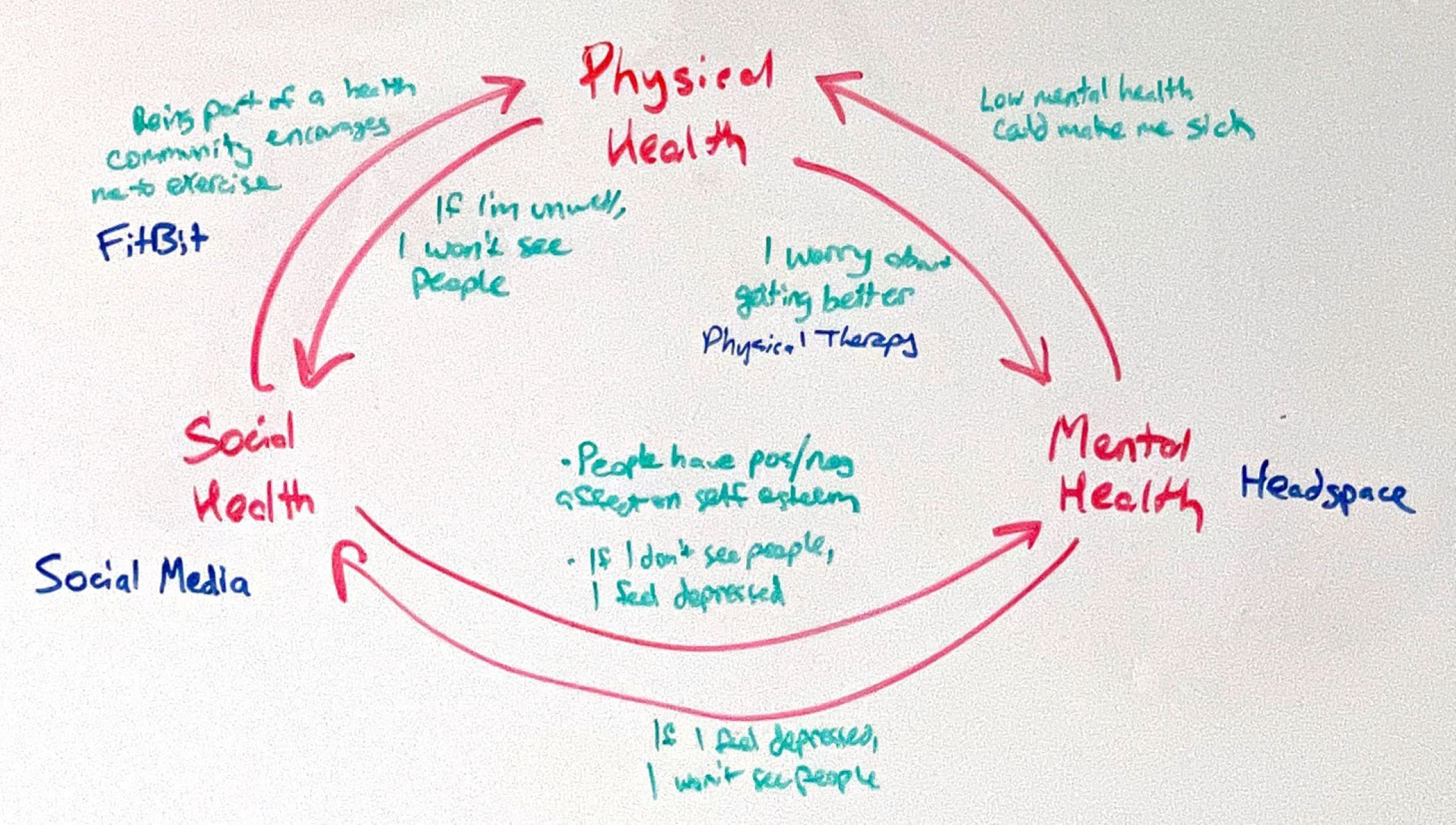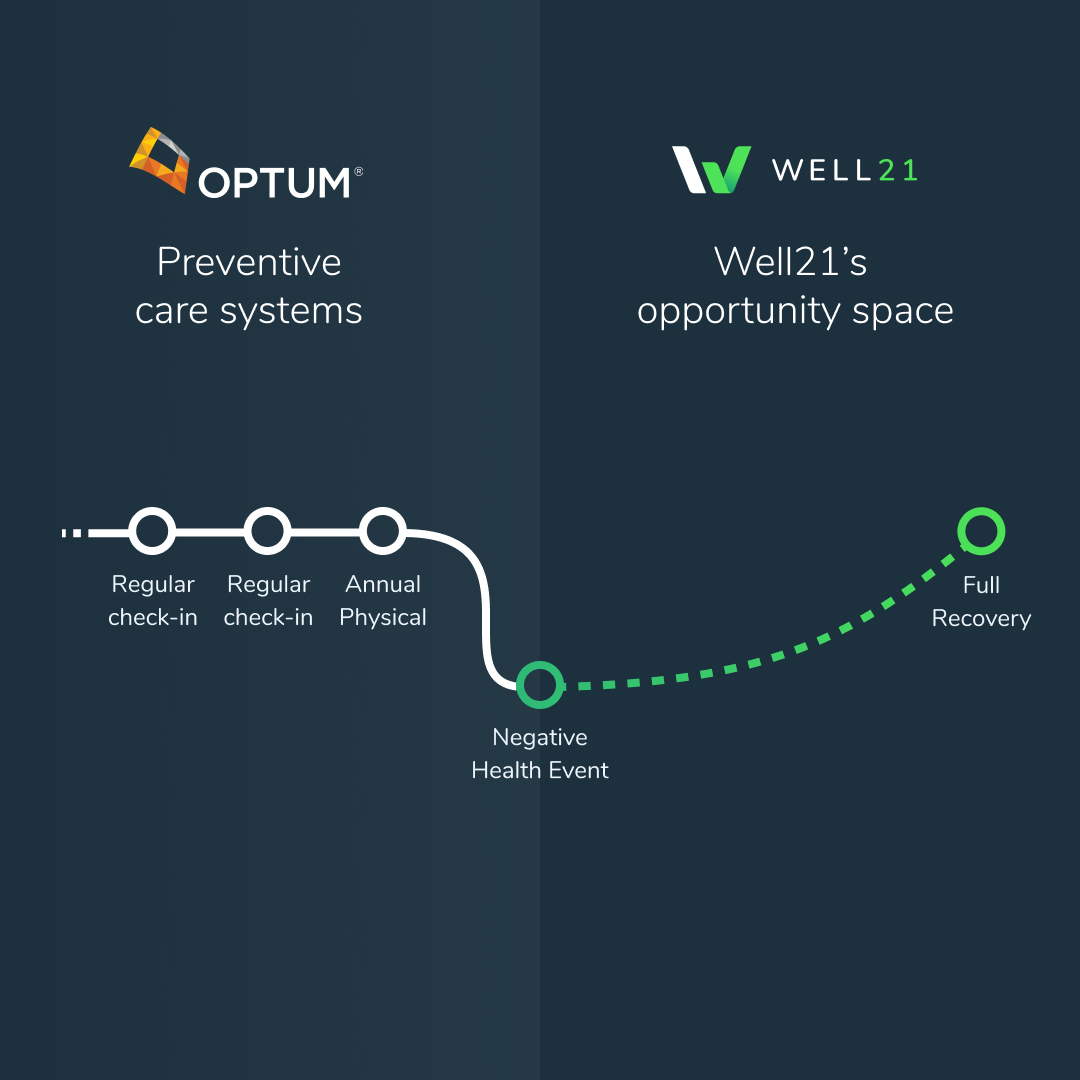
Our team took our insights from the Spring and identified an unmet need for support after negative health events, which over the course of the pandemic became all the more evident and crucial to address.
The roll-in of ProtectWell to Optum revealed that users are looking for a comprehensive system of care, rather than just preventive approaches.
When investigating a holistic approach to health that has become much more prevalent over the course of the pandemic, our team recognized the need for comprehensive, supportive care solutions as well as preventive ones.
Optum has an opportunity to support and understand the practices of healthcare members in times of poor health, rather than just good.
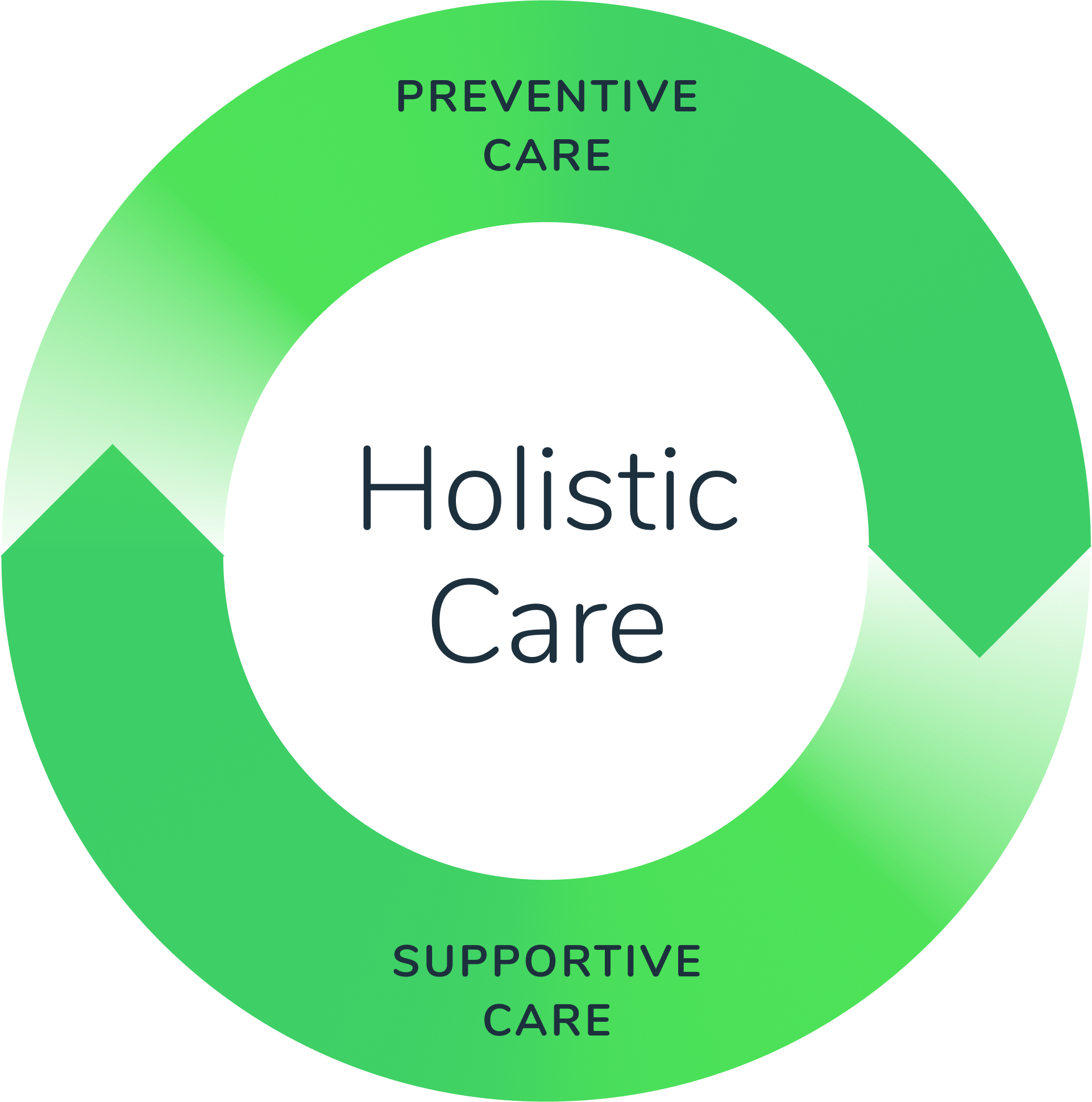
The team noted that the need for a recovery experience goes beyond one specific disease or treatment, especially as spaces outside of traditional care centers are becoming places of care. While the pathology fresh on our minds was COVID-19, the team recognized that this experience could scale far beyond that, as healing processes are becoming more and more outpatient-based.
So we set out to create a platform for recovery.
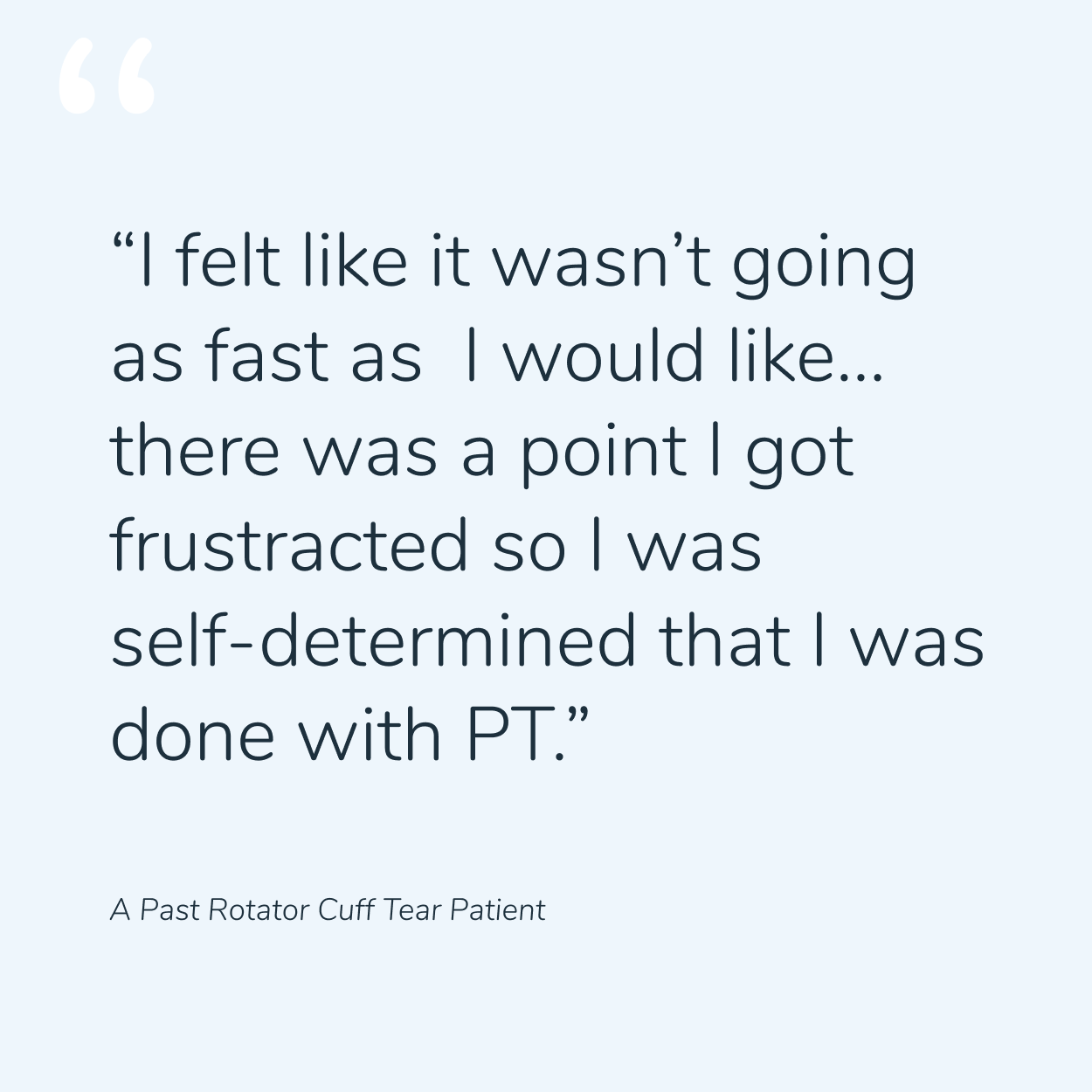
The current state informs the future state. We interviewed current and past patients as well as therapists to understand what recovery is now.
Our team chose to prove the recovery experience features out using soft-tissue recoveries. By continual testing and evaluation of the core feature-set applied to a specific illness, we were able to see just how we’re moving the dial in the recovery process.
Our experience is based on improving outcomes and reducing timelines for these users.
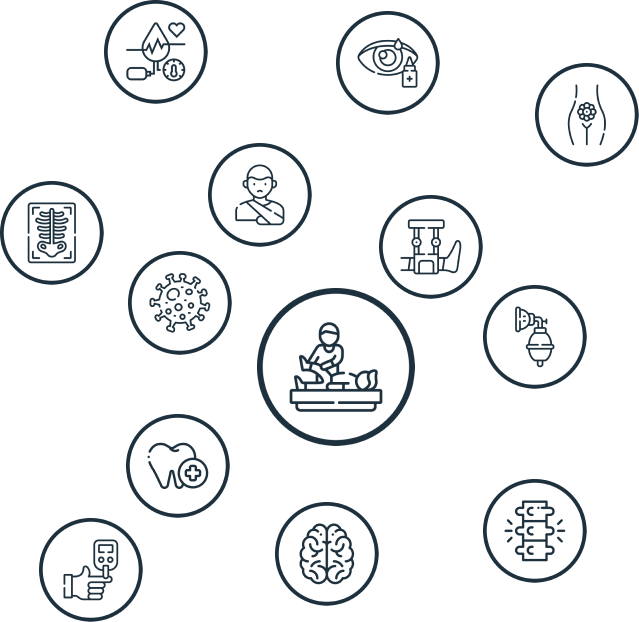
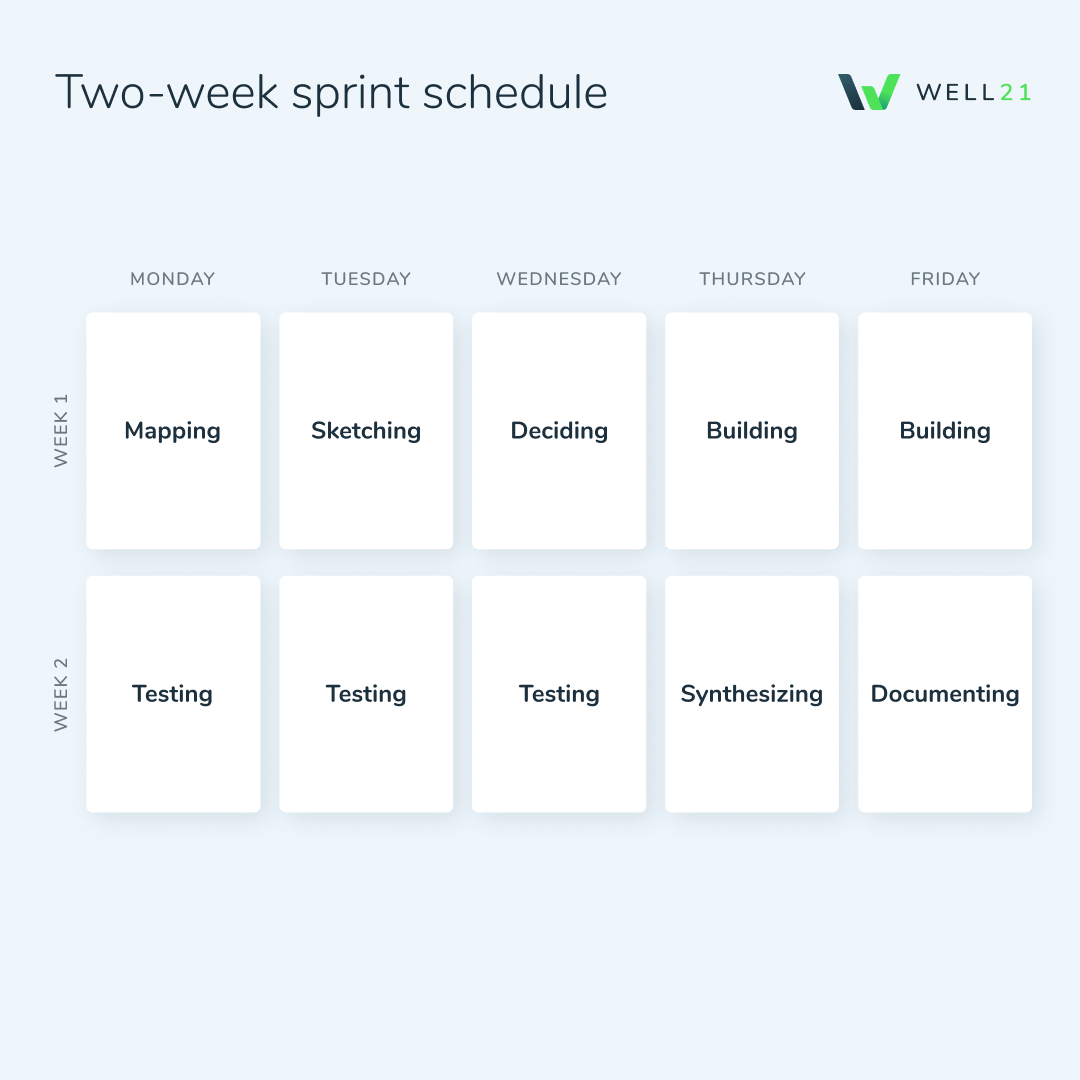
The team adopted a GV sprint methodology to move rapidly through concept validation and usability testing on different prototypes.
We spent time exploring and co-designing the four most crucial concepts we heard solutions needed to employ from our spring participants.
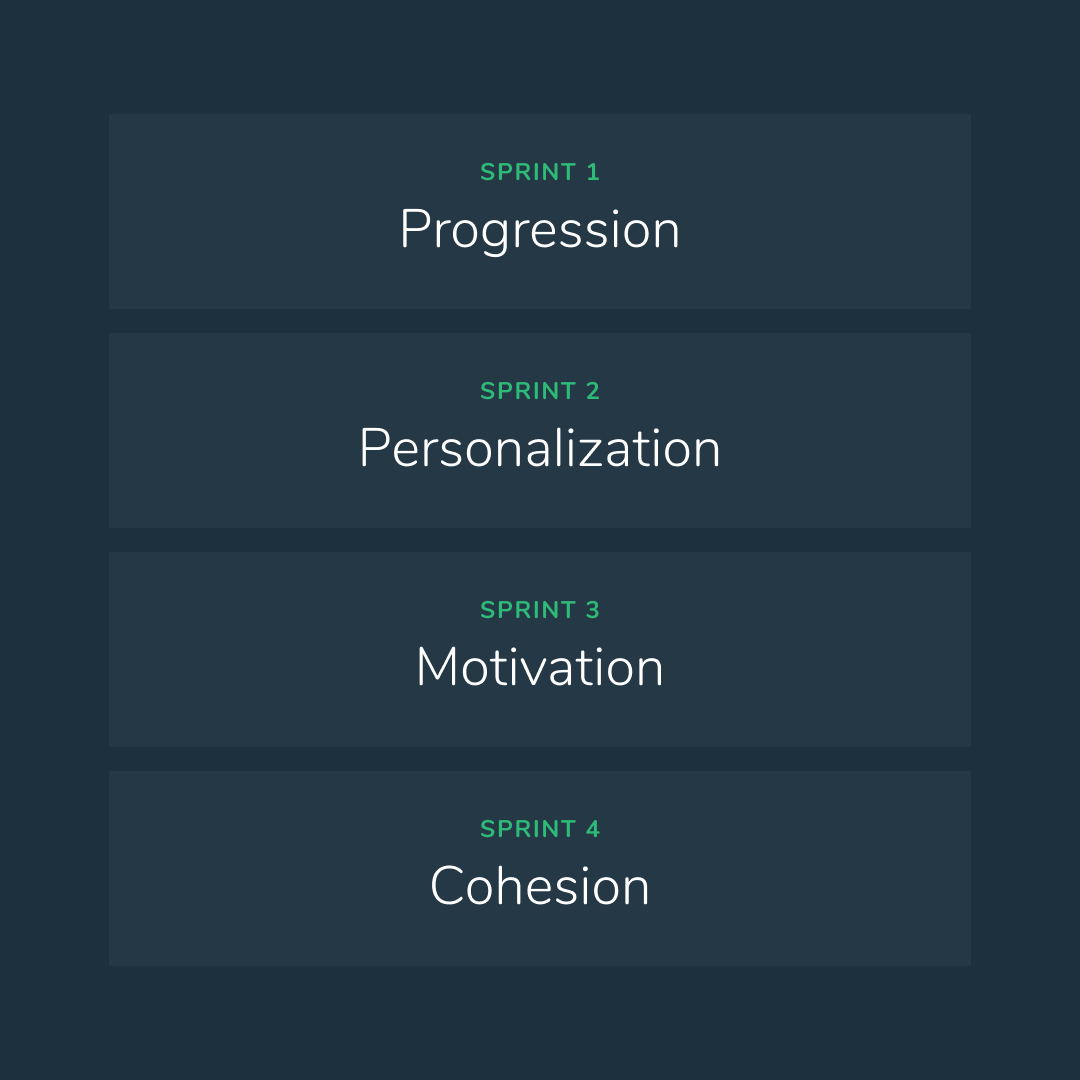
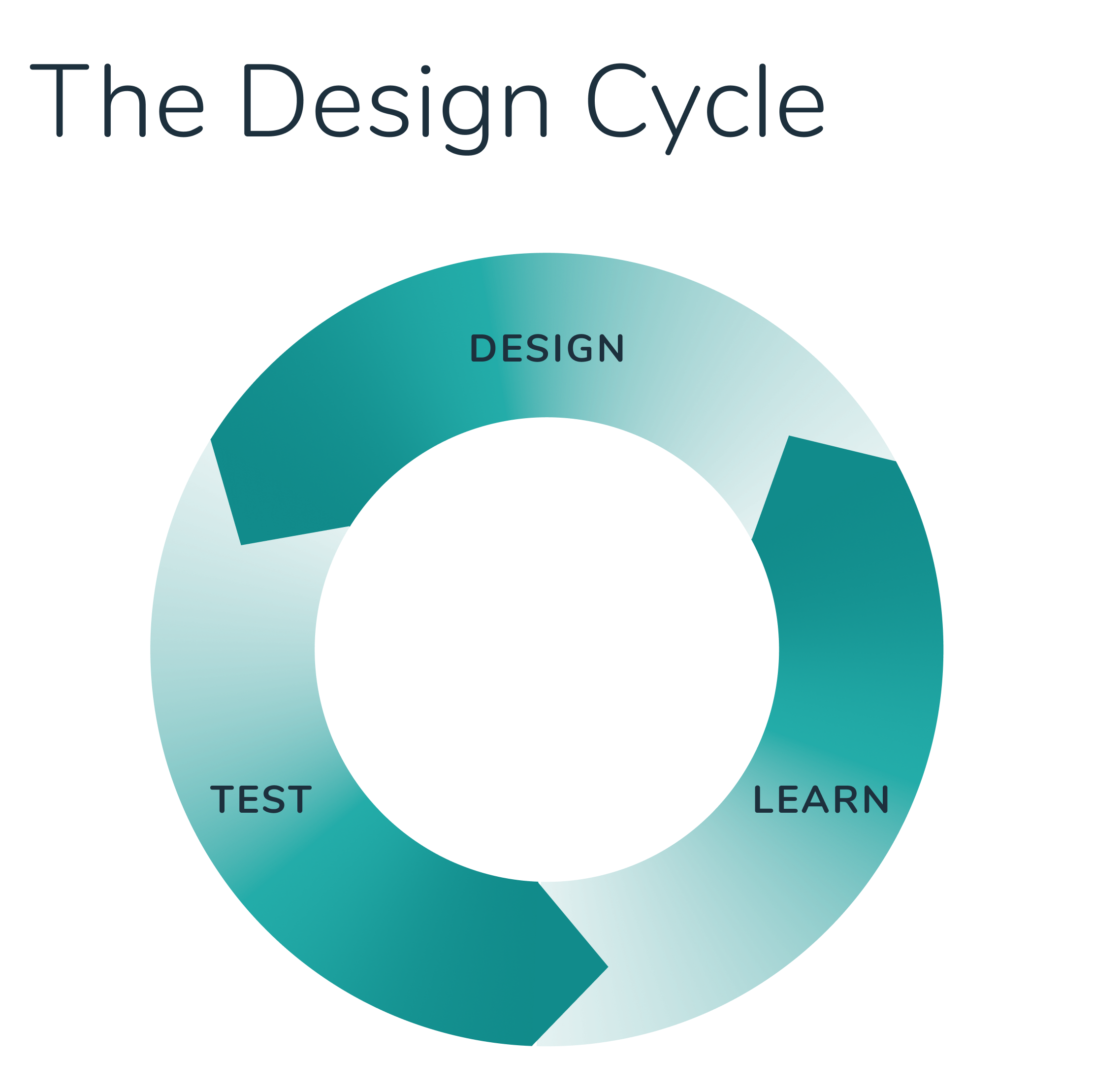
The team conducted a wide variety of research activities to help us understand what a viable, effective solution looks like for people undergoing recovery, and to help us understand just what the most effective future would be for those users.
Our team synthesized and extracted findings, which became actionable statements to inform the design of our product through a MoSCoW Prioritization matrix and product backlog maintained throughout the project.

